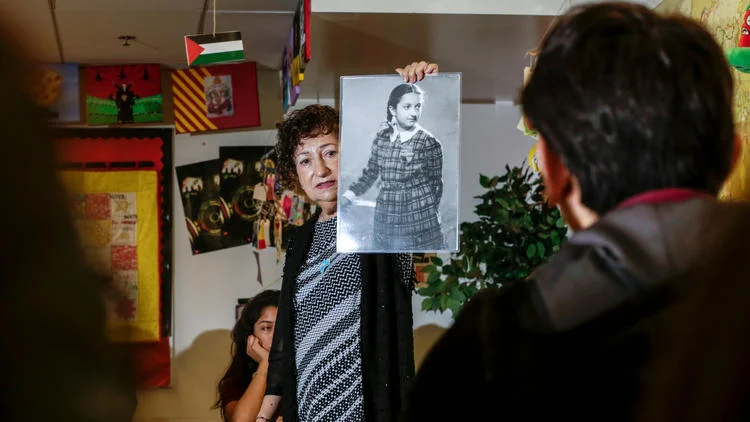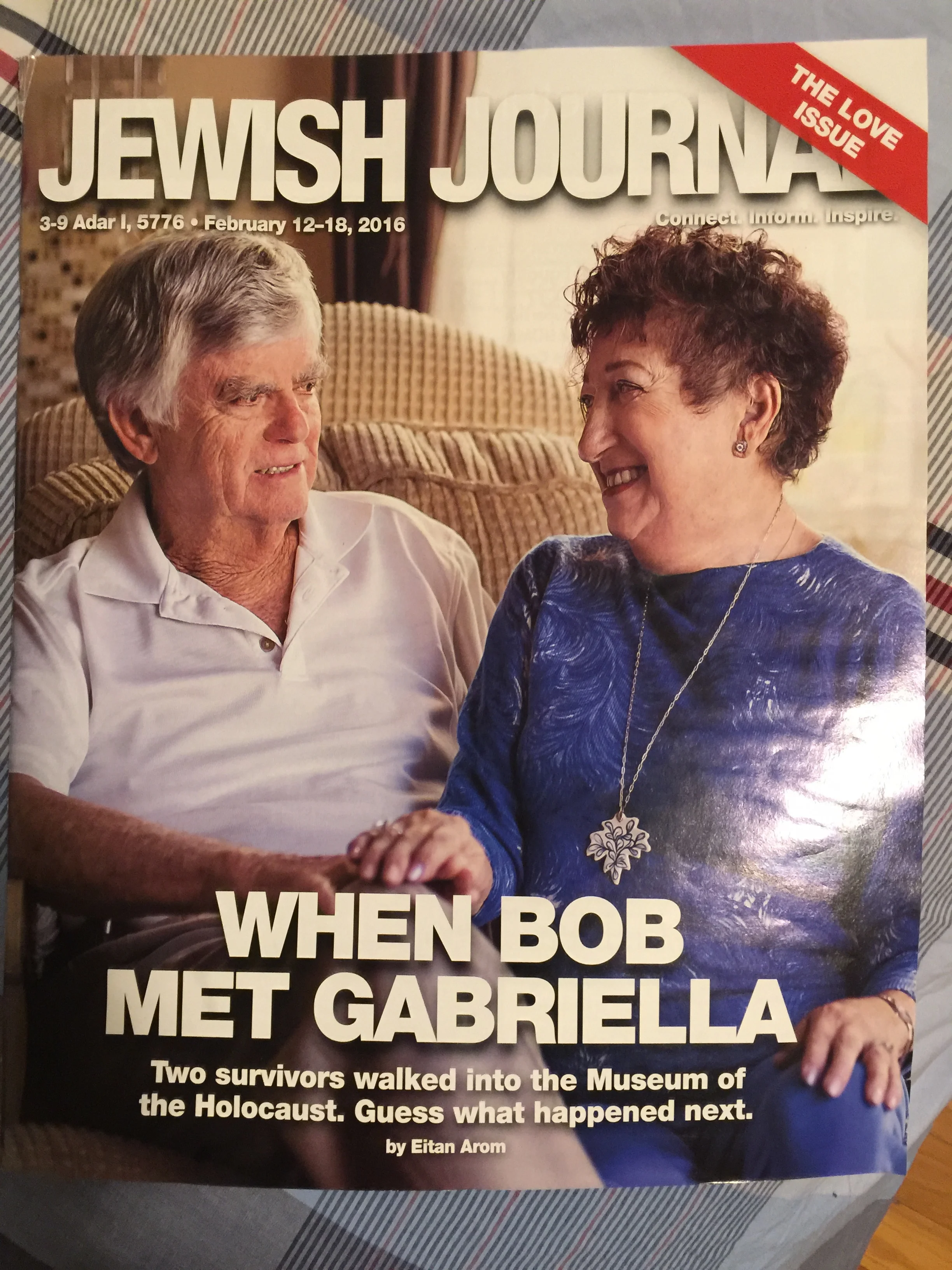Press
Gabriella has been featured in several news articles in prominent newspapers.
Survivor Spotlight
Everything Can be taken from you
December 2018
Gabriella Karin, who spent part of World War II in hiding from the Nazis, speaks to students at Animo Ralph Bunche High School about her experiences. (Irfan Kahn / Los Angeles Times)
FEATURED IN Los Angeles Times
WHAT A HOLOCAUST SURVIVOR HAS TO SAY TO SOUTH L.A. SCHOOL KIDS — AND HOW SHE USES ART TO CONNECT
September 29, 2016 | CAROLINA A. MIRANDA | CONTACT REPORTER
The first period of any school day can be boisterous, with bells ringing, friends catching up on gossip and late arrivals rushing madly through doors. But early on a Thursday morning, the students in teacher Jon Aguado’s history class at Animo Ralph Bunche High School in Los Angeles are respectful and silent.
FEATUREd in Jewish Journal
SURVIVOR: GABRIELLA KARIN
January 7, 2015 | Jane Ulman
Gabriella Karin (then Foldes) tightly clasped her Uncle Sandor’s waist as she traveled on the back of his bicycle along the back roads of Slovakia from Malzenice to Bratislava, a 40-mile journey. It was the summer of 1942, and the 11-year-old had been visiting her grandmother, who was living with a Christian family in Malzenice, when she became ill and needed to return home. Hours later, when the two arrived in Bratislava’s town center, Gabriella was shocked to see swarms of uniformed soldiers and police officers, as well as townspeople, crowding the streets. She and her uncle disembarked and began making their way to her father’s delicatessen, when a German soldier suddenly grabbed her. Gabriella’s uncle immediately took hold of her shoulders, yanking her free from the soldier’s grip. She dropped to the ground and began crawling through people’s legs, disappearing into the crowd and eventually reaching the delicatessen. “That was my most frightening experience,” she recalled.
Featured in La Verne Law School Newsletter
SURVIVOR: GABRIELLA KARIN
October 21, 2016 | Amanda Duvall, Aryn Plax
Child Holocaust survivors Gabriella Karin and Robert Geminder shared their stories Tuesday in the Morgan Auditorium to honor the 11 million that perished.
Karin was born in Czechoslovakia. At the start of the war, the Czech territory became a protectorate of Nazi Germany while Slovakia became an independent nation that collaborated with the Germans. The deportation of Jewish people in Slovakia began in 1942. Of the 60,000 Jews that were deported, only 230 returned.
FEATURED IN LARchmont Chronicle
SCULPTURE PAYS HOMAGE TO KINDERTRANSPORT
March 4, 2011 | Suzan Filipek
Before the start of World War II, 10,000 Jewish children rode trains safely to London.
Foster families, farms and orphanages took in the German children, some who were still toddlers. Most would leave their families behind forever.
Their story is told in artist Gabriella Karin’s sculpture, “A Tribute to the Children of the Kindertransport,” which opened last month at the Los Angeles Museum of the Holocaust, Pan Pacific Park.
Sculpture by Gabriella Karin (Left). Michelle Gold (Right)
Gabriella Karin and Robert Geminder on Feb. 6 at the Larry and Cheryl Katchen residence in Los Angeles. Photo by Carla Acevedo-Blumenkrantz. (From Jewish Journal)
FEATURED IN Jewish Journal
How two survivors found romance
February 11, 2016 | Eitan Arom
In a way, their relationship began like so many others: a workplace romance.
Gabriella Karin, 85, was a docent at the Los Angeles Museum of the Holocaust (LAMOTH); Robert Geminder, 80, who goes by Bob, was on the museum’s board of directors.
FEATURED IN Visalia Times
LIVING THROUGH THE HOLOCAUST
TWO SURVIVORS WILL TELL THEIR STORIES DURING CONGREGATION BEIT SHALOM EVENT.
October 29, 2015 | Donna Orozco
As Jewish children during the Holocaust in Europe, Bob Geminder and Gabriella Karin escaped capture and death many times before the Nazis were overthrown in 1945.
In 1941 when he was 6, Geminder and his family were herded to a cemetery in Poland with 20,000 other Jews. German soldiers began systematically shooting 14,000 men, women and children. As it got dark and snow began to fall, the Germans finally let the others go.
“I only survived because we happened to get to the cemetery first,” Geminder said. “Survival for Jews during this war was about luck. Arriving first put us way back.”
FEATURED IN Los Angeles Times
FACE TO FACE WITH HISTORY
THROUGH ART EXHIBIT, STUDENTS SENSE THE PAIN OF THE HOLOCAUST
November 14, 2000 | Duke Helfand
Among the most striking images in the exhibit were those created by 69-year-old Gabriella Karin, who, as a young girl, survived the Holocaust by living in a convent for three years and hiding with her family for nine months in an abandoned apartment building across the street from Gestapo headquarters in Bratislava, Czechoslovakia.
"It was nine months of complete silence," Karin told Andre and several of his classmates. "It was a similar story to Anne Frank, but a different outcome."
Andre and his classmates stood silently as Karin described her 12 scenes, made from clay and copper, that depicted moments from her childhood. One showed books being consumed by flames on Kristallnacht. Another featured a globe with a black swastika and the words "Silent World."
FEATURED IN Dennik (Slovak Newspaper) during her trip to Slovakia
Holokaust prežila aj vďaka láske, do jej tety sa zaľúbil o pätnásť rokov mladší právnik
November 14, 2000 | Duke Helfand
Gabriella was invited by the Slovak government to the Victims of the Holocaust commemoration ceremony to speak, in which the names of victims were read. She also spoke to future teachers about her experience during World War II at the Holocaust Museum in Sered, Slovakia.
Gabriella Karin. Foto N – Tomáš Benedikovič (Photo from Dennik)
Gabriella with future teachers in Sered, Slovakia.
Victims of the Holocaust ceremony.
Victims of the Holocaust ceremony.







